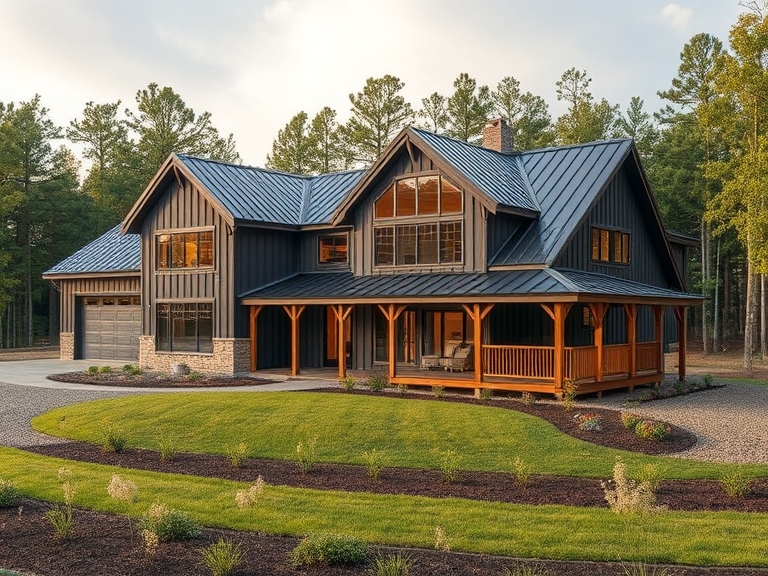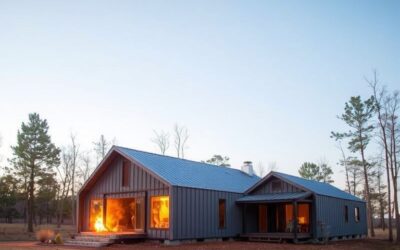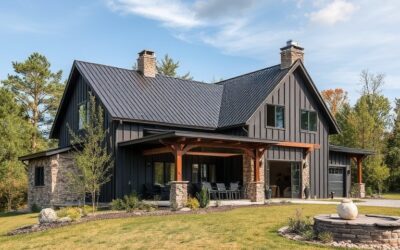Safety is always a top priority when building a home. One of the biggest concerns for homeowners is the risk of fire. Traditional homes made of wood pose a significant fire hazard, as wood is highly flammable. On the other hand, steel homes offer a safer alternative with superior resistance to fire. Choosing steel for your home’s construction can make a huge difference in protecting your family and property from the dangers of fire.
Steel homes are made with materials that do not burn, giving you a significant advantage in fire safety. Even in extreme temperatures, steel doesn’t melt or catch fire easily. This makes steel homes a practical and wise choice, especially in areas prone to wildfires or where fire safety regulations are strict. The fire-resistant properties of steel provide an added layer of security that traditional wood homes simply cannot match.
Aside from the inherent fire-resistant qualities of steel, there are many other benefits to choosing steel construction. Steel homes often include additional safety features that enhance fire protection. From fireproof insulation to advanced sprinkler systems, these homes are built with your safety in mind. By understanding the fire-resistant properties of steel and comparing them to traditional materials, you can see why steel homes are a smart investment for anyone looking to build a safer, more secure home.
The Fire-Resistant Properties of Steel
Steel stands out for its remarkable fire-resistant properties. Unlike wood, steel does not catch fire easily because it is a non-combustible material. Even at high temperatures, steel maintains its structural integrity better than wood, giving it a significant advantage in fire safety. This means steel homes are less likely to collapse during a fire, providing more time for occupants to escape and for firefighters to control the blaze.
Another important aspect of steel’s fire resistance is its low heat conductivity. While steel does get hot, it transfers heat much slower than wood, reducing the spread of fire. This slow heat transfer can prevent a small fire from escalating into a large, uncontrollable one. The stability of steel even under fire conditions makes it a preferred choice for building safe and durable homes.
Steel’s resistance to fire also means fewer repairs and less structural damage after a fire incident. Homes made with wood often require extensive repairs to replace charred or weakened parts, whereas steel homes can typically withstand the heat better and sustain less damage. This resilience not only protects your home but can also save you money on potential repair costs in the long run.
Comparing Steel Homes to Traditional Wood Homes
When it comes to fire safety, steel homes have clear advantages over traditional wood homes. Wood is highly flammable and can ignite from even a small spark. Once it catches fire, wood burns quickly, accelerating the spread of flames. This rapid burning poses a high risk to both the structure and the occupants of the home. In contrast, steel, being non-combustible, doesn’t ignite, adding an extra layer of protection against fires.
Moreover, steel homes are more durable in general. Wood homes are susceptible to weather conditions, pests like termites, and rot, all of which can weaken the structure over time. These vulnerabilities can make wood homes more dangerous during a fire because compromised structural elements may fail faster. Steel, however, is resistant to such vulnerabilities, retaining its strength and providing a safer environment.
Another key difference is the cost and effort involved in fireproofing. Wood homes often require additional treatments, such as fire-resistant coatings or special building materials, to meet fire safety standards. These add-ons can be expensive and require regular maintenance. Steel homes naturally meet many fire safety standards without the need for extra treatments, making them more cost-effective and easier to maintain in the long run. Choosing a steel home over a traditional wood home provides a safer, more durable place to live.
Advantages of Non-Combustible Materials
Non-combustible materials like steel provide key advantages in fire-safe home construction. First and foremost, these materials do not burn, which means they significantly reduce the risk of a fire starting or spreading within your home. This innate property makes steel an excellent choice for areas that are prone to wildfires.
Another advantage is the longevity and durability of non-combustible materials. Steel does not degrade under high heat, unlike wood, which can weaken and collapse during a fire. This lasting strength ensures that the structure of your home remains intact even under extreme conditions. This durability means fewer repairs and lower maintenance costs over the years, giving you peace of mind and financial savings in the long run.
Using non-combustible materials can also lower your insurance premiums. Many insurance companies recognize the reduced risk associated with steel homes and offer lower rates. This financial benefit is yet another reason to consider building your home with steel. The combination of safety, durability, and cost-effectiveness makes non-combustible materials like steel a smart choice for home construction.
Additional Safety Features to Enhance Fire Protection
While steel offers strong fire resistance, adding extra safety features can enhance protection. One important feature is installing a home sprinkler system. Sprinklers can help control or even extinguish a fire before it spreads, giving you extra time to evacuate and reducing potential damage.
Fireproof insulation is another valuable addition to steel homes. Insulation materials like rock wool or fiberglass are not only effective at regulating temperature but also resist fire. These can be added to walls, ceilings, and floors to provide an extra layer of safety.
Consider including smoke detectors and fire alarms in every room. These devices can give you an early warning in case of a fire, allowing you to take quick action. Ensure that they are checked regularly and have working batteries.
Creating firebreaks around your property is also useful. This involves using landscaping techniques to prevent fires from spreading to your home. Clear out any flammable vegetation near your home and use fire-resistant plants to create barriers. By combining these additional safety features with the fire-resistant properties of steel, you create a home that is exceptionally protected against fires.
Conclusion
Choosing a steel home ensures greater safety from fires. The fire-resistant properties of steel make it a superior material compared to traditional wood. It doesn’t burn, weaken under high temperatures, or contribute to the spread of fire, providing important safeguards for your home. In addition to these benefits, using non-combustible materials like steel can also lower maintenance costs and insurance premiums, making it a wise investment.
Incorporating additional safety features like home sprinkler systems, fireproof insulation, and smoke detectors further enhances the fire protection of your steel home. These elements work together to create a secure environment, giving you peace of mind. Firebreaks and responsible landscaping add an extra level of protection, making your property more resilient to fire hazards.
For a home that prioritizes safety, durability, and long-term savings, consider a steel home with steel building insulated panels. At Wink Panels LLC, we specialize in all-steel construction, offering customizable options that ensure fire resistance and strength. Contact us today to discover how we can help you build a safer, fire-resistant home.




